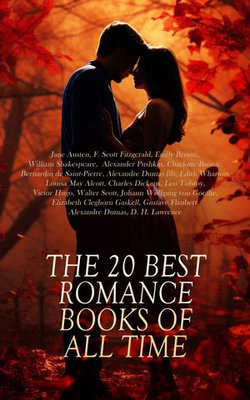In "The 20 Best Romance Books of All Time" readers are invited to explore the vast and intricate landscapes of love through the penmanship of some of the most revered authors in literary history. This anthology encapsulates an impressive range of literary styles, from Shakespeare's eloquent prose and poetry to F. Scott Fitzgerald's jazz-age narratives. Each work included in this collection offers a unique perspective on the theme of romance, immersing readers in diverse settings and epochs, from the bucolic charm of rural England to the opulence of the Russian aristocracy, all while exploring the timeless and universal nature of human affection and passion. One standout aspect of this collection is the profound emotional depth and complexity portrayed in its stories, making it a significant compilation for aficionados of romance literature. The anthology brings together illustrious authors such as Jane Austen, whose keen social commentary and wit provide a compelling look at love and courtship, and Leo Tolstoy, who delves into the intricacies of desire and moral dilemmas with unmatched narrative prowess. This edition presents the greatest romance classics of world literature - unforgettable, heart-wrenching stories that everyone should experience at least once in their lives.




Share This eBook: